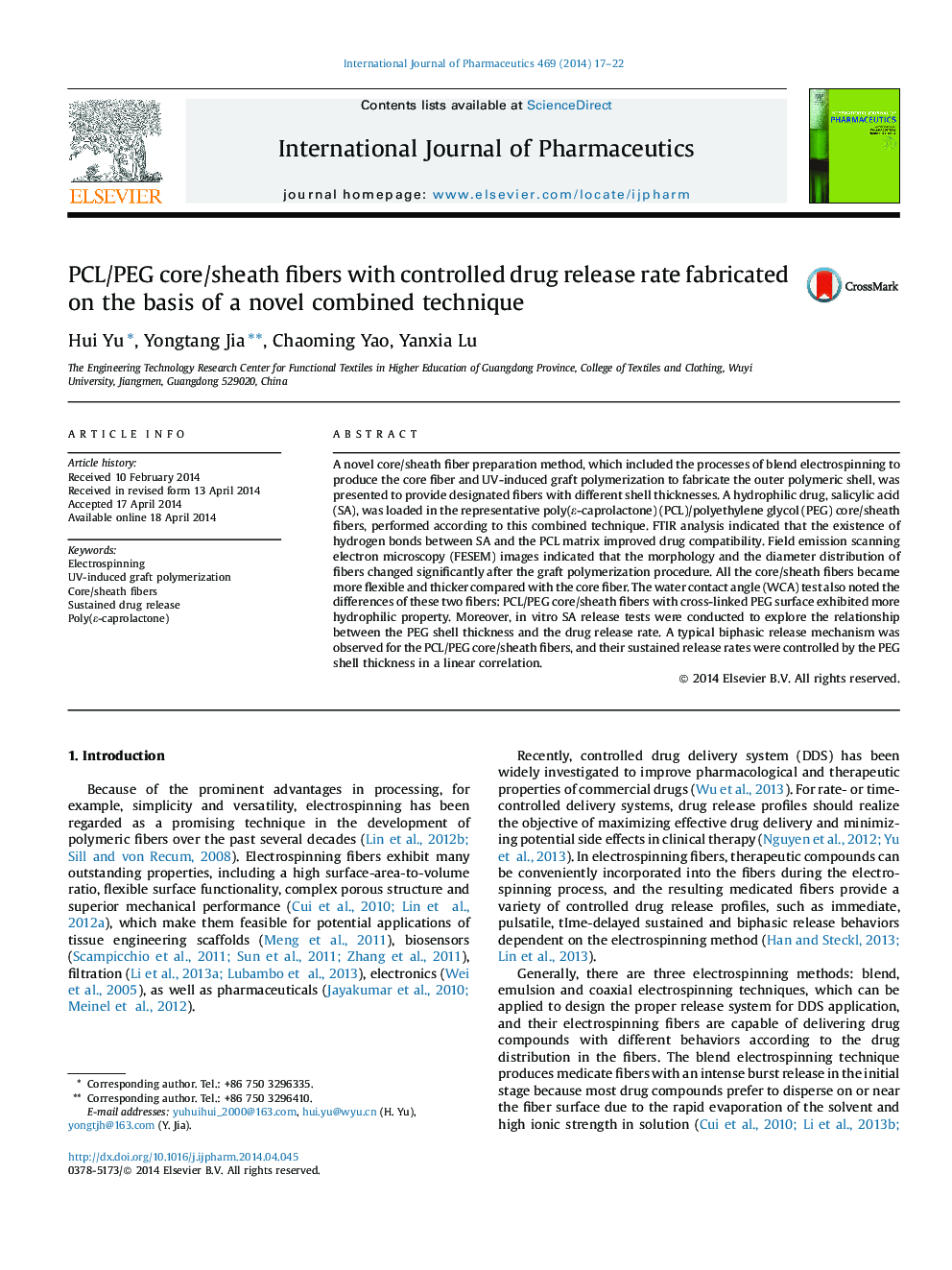| Article ID | Journal | Published Year | Pages | File Type |
|---|---|---|---|---|
| 5819622 | International Journal of Pharmaceutics | 2014 | 6 Pages |
A novel core/sheath fiber preparation method, which included the processes of blend electrospinning to produce the core fiber and UV-induced graft polymerization to fabricate the outer polymeric shell, was presented to provide designated fibers with different shell thicknesses. A hydrophilic drug, salicylic acid (SA), was loaded in the representative poly(ϵ-caprolactone) (PCL)/polyethylene glycol (PEG) core/sheath fibers, performed according to this combined technique. FTIR analysis indicated that the existence of hydrogen bonds between SA and the PCL matrix improved drug compatibility. Field emission scanning electron microscopy (FESEM) images indicated that the morphology and the diameter distribution of fibers changed significantly after the graft polymerization procedure. All the core/sheath fibers became more flexible and thicker compared with the core fiber. The water contact angle (WCA) test also noted the differences of these two fibers: PCL/PEG core/sheath fibers with cross-linked PEG surface exhibited more hydrophilic property. Moreover, in vitro SA release tests were conducted to explore the relationship between the PEG shell thickness and the drug release rate. A typical biphasic release mechanism was observed for the PCL/PEG core/sheath fibers, and their sustained release rates were controlled by the PEG shell thickness in a linear correlation.
Graphical abstractDownload high-res image (114KB)Download full-size image
